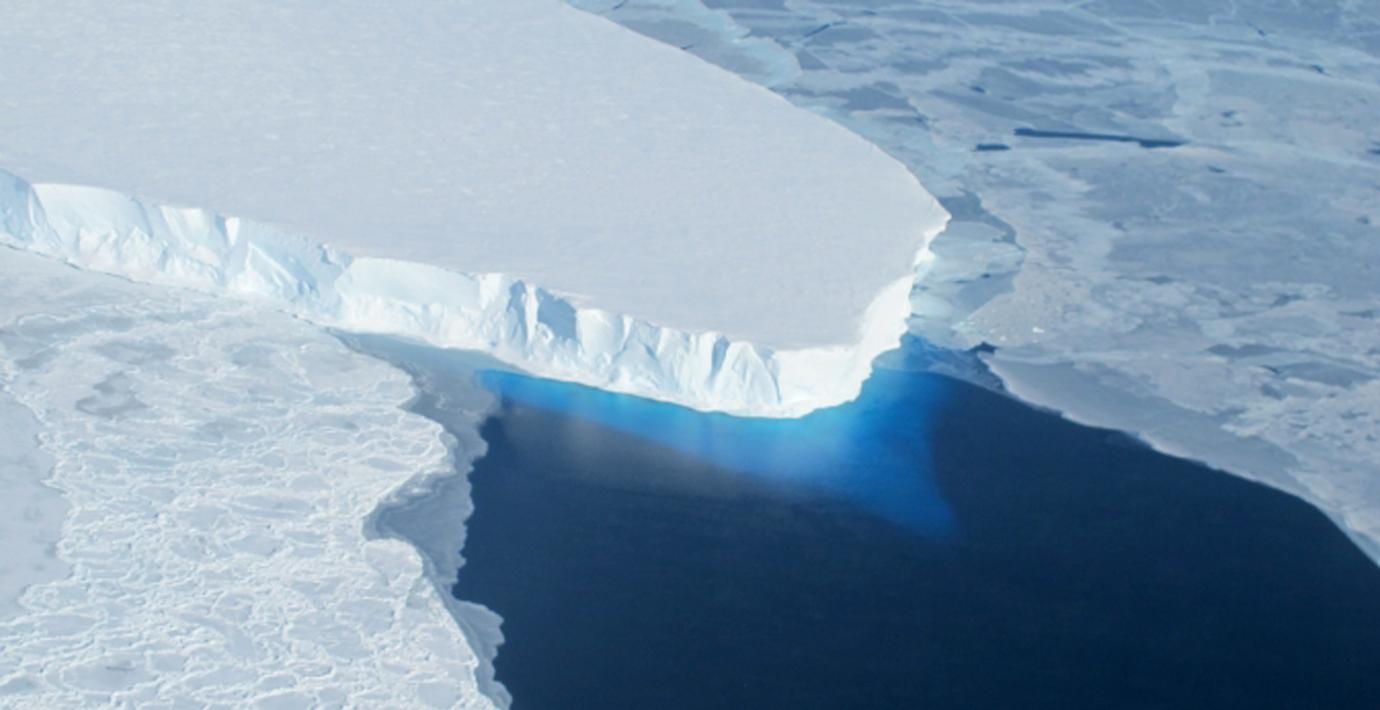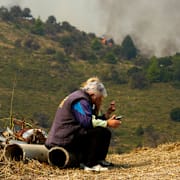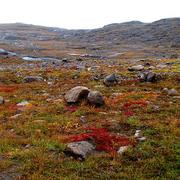
Snabbare smältning än känt av Domedagsglaciären
Isen smälter fortare i västra Antarktis än vad som tidigare har varit känt, rapporterar SR Vetenskapsradion.
Slutsatsen baseras på att forskare för första gången har undersökt havsströmmarna och hur mycket smältvatten som flödar ut från Thwaites-glaciären, ofta kallad Domedagsglaciären.
När glaciären smälter underifrån kan det innebära att den förlorar stöd, vilket i sin tur leder till att is längre in transporteras ut i havet och ger en vattenståndshöjning.
bakgrund
Thwaitesglaciären
Wikipedia (en)
Thwaites Glacier, sometimes referred to as the Doomsday Glacier, is an unusually broad and vast Antarctic glacier flowing into the Pine Island Bay, part of the Amundsen Sea, east of Mount Murphy, on the Walgreen Coast of Marie Byrd Land. Its surface speeds exceed 2 kilometres per year (1.2 miles per year) near its grounding line. Its fastest flowing grounded ice is centred between 50 and 100 kilometres (31 and 62 mi) east of Mount Murphy. It was named by the Advisory Committee on Antarctic Names in 1967 after Fredrik T. Thwaites (1883–1961), a glacial geologist, geomorphologist and professor emeritus at the University of Wisconsin–Madison. The historian Reuben Gold Thwaites was his father.Thwaites Glacier is closely watched for its potential to raise sea levels. Along with the Pine Island Glacier, it has been described as part of the "weak underbelly" of the West Antarctic Ice Sheet, due to its apparent vulnerability to significant retreat. This hypothesis is based on both theoretical studies of the stability of marine ice sheets and observations of large changes on these two glaciers. In recent years, the flow of both of these glaciers has accelerated, their surfaces have lowered, and their grounding lines have retreated.
Omni är politiskt obundna och oberoende. Vi strävar efter att ge fler perspektiv på nyheterna. Har du frågor eller synpunkter kring vår rapportering? Kontakta redaktionen



